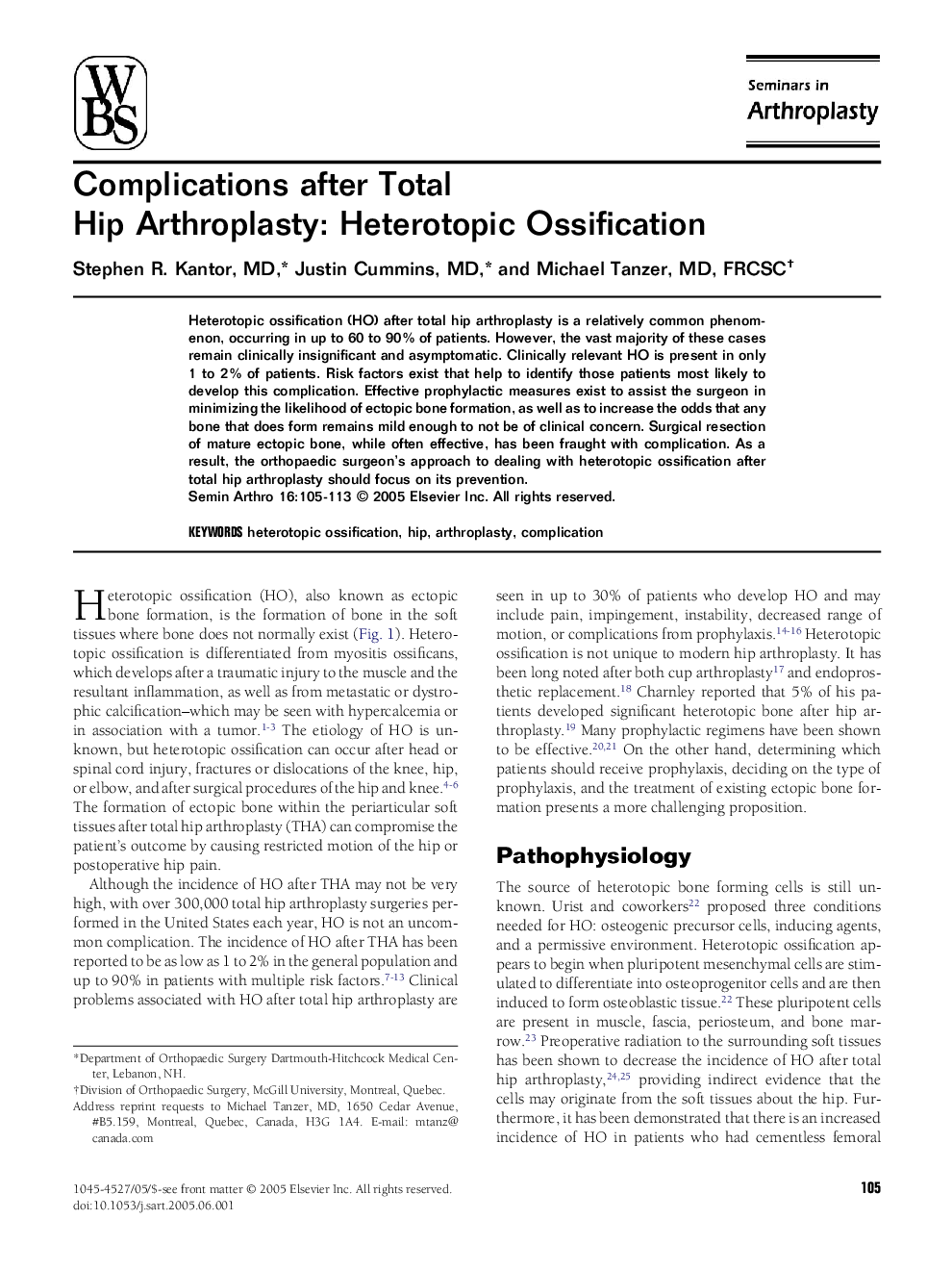| Article ID | Journal | Published Year | Pages | File Type |
|---|---|---|---|---|
| 9359479 | Seminars in Arthroplasty | 2005 | 9 Pages |
Abstract
Heterotopic ossification (HO) after total hip arthroplasty is a relatively common phenomenon, occurring in up to 60 to 90% of patients. However, the vast majority of these cases remain clinically insignificant and asymptomatic. Clinically relevant HO is present in only 1 to 2% of patients. Risk factors exist that help to identify those patients most likely to develop this complication. Effective prophylactic measures exist to assist the surgeon in minimizing the likelihood of ectopic bone formation, as well as to increase the odds that any bone that does form remains mild enough to not be of clinical concern. Surgical resection of mature ectopic bone, while often effective, has been fraught with complication. As a result, the orthopaedic surgeon's approach to dealing with heterotopic ossification after total hip arthroplasty should focus on its prevention.
Related Topics
Health Sciences
Medicine and Dentistry
Orthopedics, Sports Medicine and Rehabilitation
Authors
Stephen R. MD, Justin MD, Michael (FRCSC),
